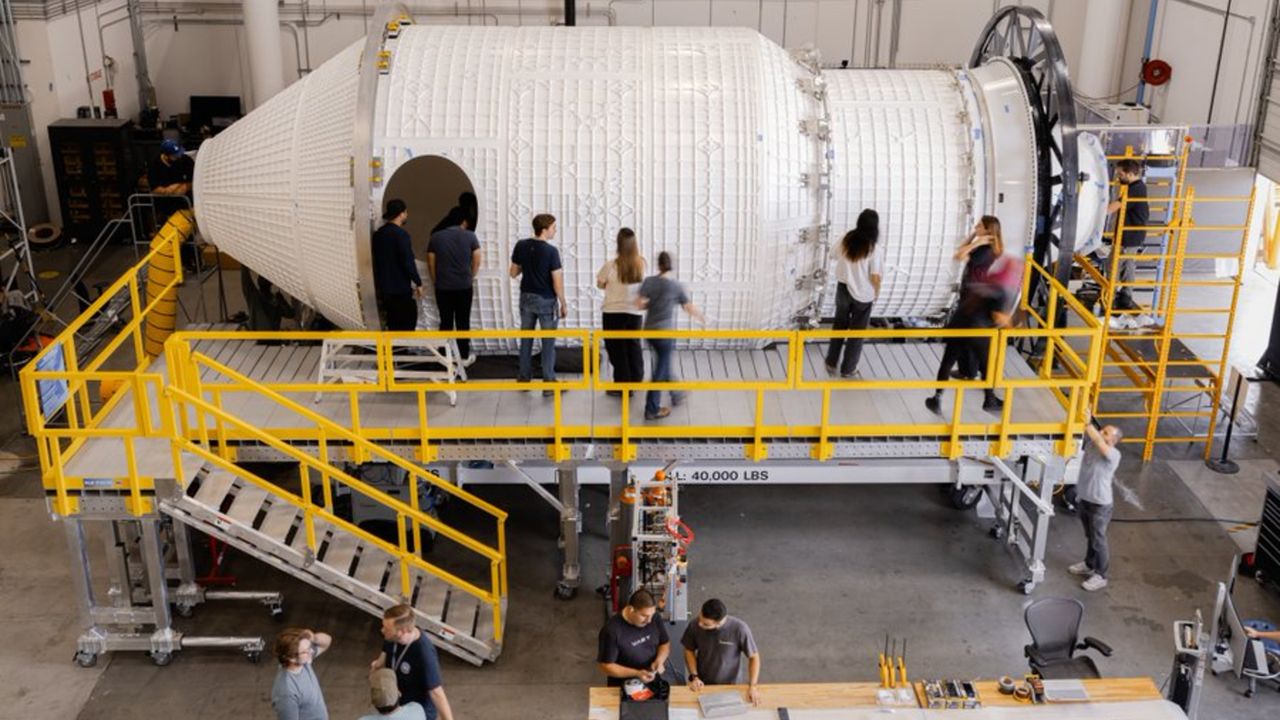Vast, a California-based startup, is in the final stages of preparing its Haven-1 private space station for launch scheduled in 2026. This ambitious project aims to revolutionize human spaceflight by establishing a commercial presence in low Earth orbit (LEO). Recently, the company completed the final weld on Haven-1’s primary structure, followed by painting, as it works toward integrating essential components like a hatch and a domed window.
Haven-1 is set to launch aboard a SpaceX Falcon 9 rocket, making it the largest spacecraft to be lifted by this rocket, weighing approximately 31,000 pounds (14,000 kilograms). The space station will accommodate up to four short-duration astronaut missions during its three-year operational lifespan, with crews of four spending ten days on board at a time. The total mission duration will amount to 160 astronaut days, marking a significant milestone in commercial space exploration.
Drew Feustel, Vast’s lead astronaut and former NASA astronaut, emphasized the importance of this initiative during the 76th International Astronautical Congress (IAC) held in Sydney, Australia, in early October. He stated, “If we stick to our plan, we will be the first standalone commercial LEO platform ever in space with Haven-1, and that’s an amazing inflection point for human spaceflight.” The Falcon 9 for the launch has already been secured, with liftoff potentially occurring as early as the second quarter of 2026.
Founded in 2021, Vast has seen rapid growth, expanding its workforce to around 800 employees. Most of its hardware is produced in-house, with solar arrays and thrusters being the only components sourced externally. Feustel noted, “When I joined in December 2023, we were still deciding between stainless steel and aluminum. Now, less than two years later, the primary structure is welded.”
Vast’s vision for Haven-1 extends beyond a mere private station. It aims to shift the paradigm of human spaceflight by focusing on the astronaut experience. The design incorporates aesthetics and comfort, contrasting with the utilitarian approach of the International Space Station (ISS). The company has even hired a former Campbell’s food developer to enhance astronaut cuisine and has created an inflatable sleep system that simulates gravity, improving rest quality for crew members.
The company’s progress was showcased at the IAC, where attendees could try out the new sleeping system. As Haven-1 gears up for its launch, it serves as a crucial step towards Vast’s future ambitions, particularly the development of Haven-2. This more complex, modular project is envisioned as a potential replacement for the ISS, which is set to be deorbited in 2030.
Haven-2 will feature a larger volume, additional docking ports, fixed solar arrays, and a design that allows for greater modularity, facilitating the attachment of cargo or future nodes. Feustel explained, “Haven-2 will be stretched in length, add another docking port, and become more modular. We can attach cargo supply while the crew is there.” This expansion will require the use of a SpaceX Falcon Heavy rocket for launch, with its central node designed to be launched via SpaceX’s upcoming Starship megarocket.
Currently, Haven-1 is funded privately, with its launch already secured financially. The future of Haven-2, however, depends on NASA’s Commercial LEO Destinations (CLD) program. Feustel noted that the company is prepared to adapt its architecture based on NASA’s expectations for the program.
Vast aims to create sustainable living spaces in orbit. As Eva Behrend, Vast’s vice president of communications, articulated, “We were founded for long-term living in space, so artificial gravity. But we realized we needed stepping stones. So we said, ‘Let’s just build it and prove we can do it.'”
In line with this vision, Vast is focused on creating destinations in space where people can live, work, and appreciate the view of Earth. The upcoming launch of Haven-1 marks not only a significant achievement for Vast but also a promising development for the future of human space exploration.
